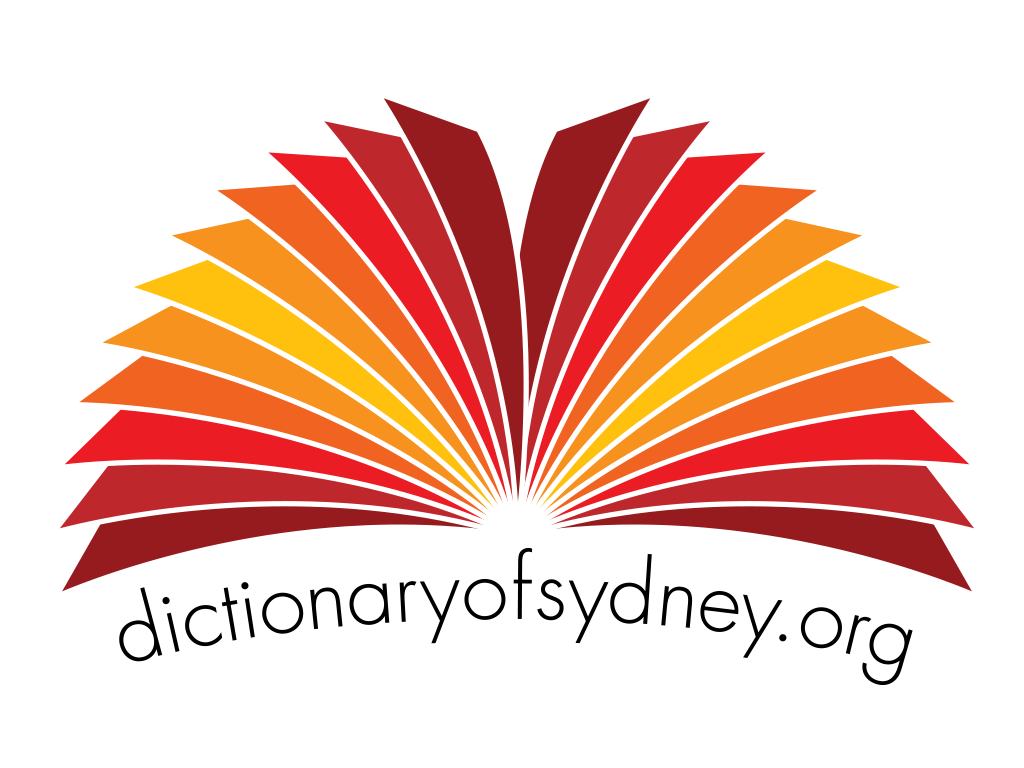The Dictionary of Sydney was archived in 2021.
Search
Spanish (holey) dollar
Devised in 1810 to prevent the colony's currency from disappearing offshore, the holey dollar was Sydney's first really local coinage, remaining legal tender until 1829.
Transcript: Mr George Bates on a chance 'meeting' with Henry Lawson's dog
Mr George Bates, born in 1912, interviewed in 1986 for the Looking Back at Liverpool: An Oral History of the Liverpool Region 1900 to 1960 project, talks about a chance 'meeting' with Henry Lawson's dog in North Sydney during his childhood.
Her Majesty's Theatre
There have been three Her Majesty's Theatres in Sydney, spanning nearly a century of the city's theatrical history.
Cullis-Hill, Eleanor
An early woman architect in Sydney, Eleanor Cullis-Hill worked for the Housing Commission before setting up her office at home, because she felt women were not really welcome in architectural offices.
The Miller at the Point, from These Walls Have Ears: My Place, 2013
Come on a walk down Windmill Street “and back in time“ to find out the story behind the name of one of Sydney's oldest suburbs. Turns out, it was a prickly miller who started out at Millers Point.
Bruhn, Norman
Dockworker, gunman, thief, stand-over man and pimp who became known for his garroting skills. He served in the 70th Infantry, Citizen Military Forces and as a private in the 6th Battalion, 2nd Reinforcement of the Australian Imperial Force. He was allegedly forced to leave…
Dalley, Catherine
Irish housemaid from Kinsale in County Cork who was tried for stealing sheets and sentenced to seven years transportation, arriving in Sydney in 1825 with her daughter. John Dalley applied for a ticket of leave to marry her which was initially rejected and so the couple were…
Royal Australian Historical Society Green Plaque 59. The Outbreak of the Plague
Commemorative plaque that was installed at the Rocks between 1984 and 1988, as part of the Sydney Green Plaques Bicentennial project, on the site of the outbreak of plague in 1900. The text on the plaque read: In 1900 bubonic plague broke out in Sydney. Arthur Payne, a lorry…
Pyrmont Power Station
Steam driven station which powered Sydney's first electric street lights. By the 1970s it became an emergency generator as new power stations were bought into use. The original façade is preserved on Pyrmont Street.
Fairfield local government area
Area in Sydney's west, part of the traditional lands of the Cabrogal tribe, a sub-group of the Gandangara. Governed by Fairfield City Council, it covers 104 square kilometres with a population of nearly 180,000 in 2010.
Royal New South Wales Veteran Corps
Military unit made up of veterans who were offered the chance to reform as a garrison unit. They arrived in Sydney in 1826 and performed guard and other light duties before being disbanded in 1833.
Redfern railway station
Railway station in Redfern, originally known as Eveleigh Station. Sydney's original terminating railway stations, both known as Redfern due to their proximity to the suburb, were replaced by Central Station which opened in 1906.
Sesquicentenary of European settlement of Australia 1938
Celebration of Australia Day to mark 150 years since the arrival of Governor Phillip and the First Fleet. It consisted of a re-enactment and flag-raising at Sydney Cove, followed by a pageant with 120 motorised floats.
St Vincent's Hospital
Hospital founded by the Sisters of Charity Catholic religious order in 1857, which has grown into one of Sydney's largest health care organisations, with public and private divisions, a hospice and teaching and research facilities.
Royal Australian Historical Society Green Plaque 28 National Trust Centre/Old Fort Street School
Commemorative plaque that was installed on the site of the Old Fort Street School (now the National Trust Centre) between 1984 and 1988 as part of the Sydney Green Plaques Bicentennial project.
Australian League
League created in Sydney by Rev. John Dunmore Lang, James Wiltshire and Sir Henry Parkes in 1850, which aimed to abolish transportation of convicts and establish universal male suffrage and a 'Great Federal Republic of Australia'.
Laing, John
Scottish immigrant who became a successful engineer in Sydney, both at Mort's Dock and in the Public Works Department, and was eminent in the Engineering Society of New South Wales and an advocate of technical education.
Green, Alexander
Convict who was appointed the public executioner of Sydney Town and the colony of New South Wales, responsible for almost 490 executions from January 1828 to May 1855, when he was committed to a lunatic asylum.
Hannan, Francis
Irish-born butcher who migrated to Sydney via New Zealand and established his own business, F Hannan and Co, with a chain of butcher shops. His first shop was in the former Star and Garter Inn in Randwick.

